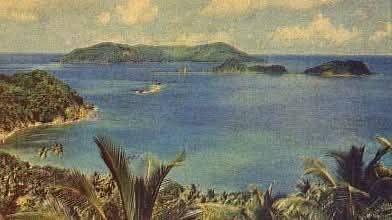The island of Tobago, once a possession of the English monarch, faced a series of tumultuous events that shaped its history and socio-economic landscape. One of the most pressing concerns for landowners was the persistent threat of a French takeover, which haunted the island from 1763 and materialized in 1781 and 1802. This fear was finally laid to rest in 1815 with the signing of the Treaty of Paris, which solidified Tobago’s status as a British colony. However, this resolution did not alleviate all challenges, as the island grappled with the growing anti-slavery movement and the declining performance of its sugar industry, a cornerstone of its economy.
In an effort to stabilize the island’s affairs, the administration appointed Charles Alfred Francklyn as the agent for Tobago in 1820. Tasked with overseeing sugar sales, procurement of essential goods, and legal matters, Francklyn’s role was pivotal. Yet, the changing ownership of estates amid the intensifying anti-slavery movement, exemplified by the 1823 rebellion in British Guiana, added to the instability. The plantocracy, burdened by economic realities and unable to sustain their lavish lifestyles, faced further decline.
Another significant development was the construction of a courthouse in 1821, a project overseen by a committee of council and assembly members. This initiative highlighted the island’s efforts to establish a formal legal system. Meanwhile, the allocation of land to poor settlers, including figures like John Burnett and William Sloane Wilson, revealed the complexities of land ownership and social stratification.
The labor of enslaved Africans played a crucial role in Tobago’s economy, not only in estate work but also in defense and other services. However, the compensation for their labor was paid to their owners, not the workers themselves, a practice that underscored the inhumane nature of slavery. After Emancipation, planters claimed a shortage of labor, yet the value of the work done by enslaved Africans far exceeded what they were willing to pay freed individuals.
Despite efforts to address financial deficits through taxation on enslaved individuals, merchants, and alcohol, Tobago’s economy remained unstable. The decline in sugar production and the increasingly volatile atmosphere on plantations mirrored broader regional unrest, leaving the island’s future uncertain.
